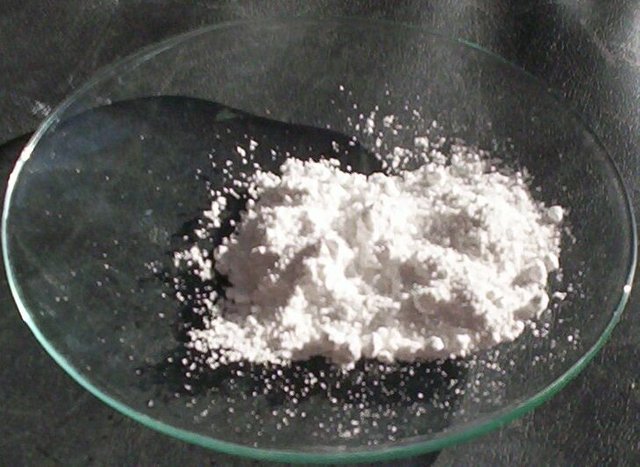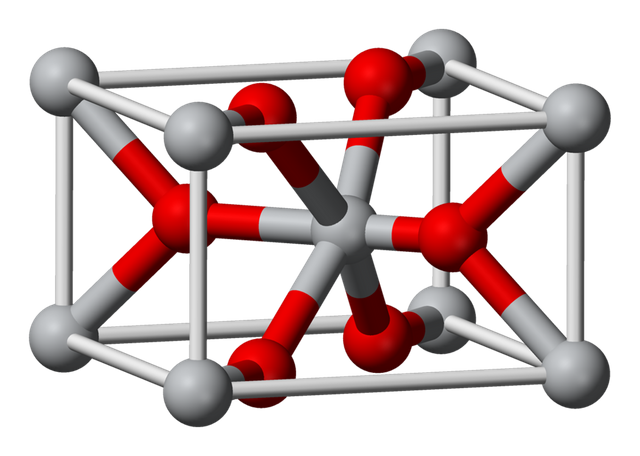Photo catalytic degradation of Organic Pesticides using TiO2 ; Panacea to pesticides persistence in the Environment.
Alot been written on various types of pesticides, I think it's high time we move on to how we can degrade some of them on our field and water bodies. If pesticides remain non-degraded on the field, then what is the function of Scientists in the world? We can't just maintain a sit and look approach towards this ugly scenerio. If you actually follow up with this series from the beginning, I stated in the first post that pesticides was introduced to deal with food crisis.
Knowing fully well that world population is on high level of growth, less farmers are on the farm, because many want to work in the office or industry. If you are in some African countries, the case is worse, because most government are paying less attention to farming activities, worst case is security of the farmers are not guaranteed.
Coupled with the above, pest became a major competitors with farm produce, so this prompt the few farmers to utilize pesticides.
Let's now get to the business of the day. How can pesticides be mopped up after it's application on the farm?
One of the major established method is through the use of photocatalytic breakdown of pesticides
You see, during the course of this post, I will base the write up much on Chemistry of the substance that influence the photolytic breakdown of pesticides, but trust me , you will enjoy it.
So what is the meaning of photocatalytic process.? From that term, it simply means the employment or utilization of light (light = photo) to initiate the influence that a substance have on the speed of a chemical reaction whereas the substance never get involved in the reaction but actually influence the rate of the reaction.
A typical photo catalytic process:: By MQUB - Own work, CC BY-SA 3.0,
A particular catalyst of interest will be discussed here. This catalyst is very good at mopping up organic substances that have polluted the environment by human activities. Though the catalyst is only activated in the presence of light. It convert the organic pollutants into it's minerals.

Before going deep, let's check a bit of the catalyst. TiO2 is referred to as Titanium dioxide or titanium iv oxide. It is widely used in paint production and use in making sunshade glass, but that's not our area of interest. It belongs to class of photocatalyst. Some metal oxide semiconductors are known to be used as photocatalyst because they are not corroded by light and their broad band energy is high. In all of the known photo catalyst, some unique properties such as non-toxicity, thermal stability, inertness and cheapness of TiO2 makes it to be different from others. Degradation of organic substances and waste water treatment also gives it a good edge over others.
Surface and structural attributes of TiO2 such as crystal anatomy, size of particles, band gap energy it's surface area are all responsible for it's unique photocatalytic action.
It's photo catalytic ability was discovered by a man known by the name
Akira Fujishima and the photo catalytic process taking place over the surface of the compound is known as Honda-Fujishima effect. The photo catalytic ability of this compound is greatly improved when it is doped with another element which creat an electron hole on it. For instance, it is doped with carbon in the process of splitting water molecule into hydrogen and oxygen.
However, in the cleaning process of organic waste, for effective operation it is doped (treat) with Magnesium ion (Mg2+). The doping process increases the surface area of TiO2 than when it is not doped. How the presence of the Magnesium ion improve the cleaning ability of TiO2 is that it create more electron hole which is needed on the surface of the photocatalyst. Using only TiO2 can produce a desired result, just that it will be excited from low energy level to a high energy level in the presence of ultraviolet light.
The scenerio or the main process taking place during this reaction is what we can refer to or called Assisted or Boosted Oxidation Process which is a means of removing unwanted pollutants mostly organic in nature which didn't left much discussed pesticides behind. This photocatalysis method has tremendously been used in changing environmentally dangerous substance/ substances into more eco friendly substances.
Application of TiO2 doped with Mg2+ on waste water or water body which has received some pesticides leads to the mineralization of the organic pesticides through electron transfer taking place between the organic pesticide residue and TiO2 . The Ultraviolet light striking the surface of TiO2 stir up the production of the electron-hole which then travel to the top form bond with hydroxyls on the surface and then initiate hydroxyl radicals. It's these radicals that now transformed the pesticides through oxidation process into minerals which are not poisonous.
TiO2 +hv (<387nm) ------>e-CB + hVB+ ------(1)
hVB+ + R -----> intermidiate ----> CO2 + H2O ----- (2)
H2O + hVB+ -----> •OH + H+ ---------(3)
•OH + R ---------> CO2 + H2O -------- (4)
The equation above shows the step by step photo catalytic reaction.
The TiO2 is the heterogeneous catalyst
e-CB which is refered to as electron in the conductive band is obtained when photon comes upon the Catalyst, and possess a good reducing properties.
hVB+ is the positive hole in the Valence bond generated, and it has a good oxidizing properties. It combine with the organic pollutants and oxidized it to Carbon iv Oxide (CO2 ) and water (H2O) as we see it in the chain reaction above.
By another means, the hVB+ can show it's oxidizing capacity by combining with H2O and then split it up into •OH which then further processed to combine with the organic compound and split it up into it's minerals product which are
CO2 and H2O.
the R stand for any organic pollutants to be degraded.
Electrons initiated through the Ultraviolet light can as well form bond with oxygen on the surface, this then leads to what is called superoxide and some other very strong reactive ions or molecules which can also transform organic pesticides to minerals through oxidation.
The radiation source generally for any photo catalytic process can be both artificial or by nature which is the sunlight. The most easily used artificial source is a Mercury lamp which could be low, medium or even high pressure lamp. This process can as well takes place inside a photo catalytic reactor using Mercury lamp or solar as it light source. The reactor is also categorized based on the physical form of installation of the photo catalyst wether hanged or attached.
While using this (semiconductor) TiO2 , several condition is attached to the rate of the process of degradation pesticides, these include;
•Loading of catalyst
•Hydrogen ion concentration of the solution
•Photocatalyst size and structure
•Temperature of the reaction
•Pollutants nature and it's concentration
•Inorganic ions.
SUMMARY
Organic pesticides need to be removed from environment, and one of the means is through the use of photo catalytic reaction.
Photo catalytic reaction means the employment or utilization of light (light = photo) to initiate the influence that a substance have on the speed of a chemical reaction whereas the substance never get involved in the reaction but actually influence the rate of the reaction.
Unique properties such as non-toxicity, thermal stability, inertness and cheapness of TiO2 makes it to be different from others. Degradation of organic substances and waste water treatment also gives it a good edge over others.
However, in the cleaning process of organic waste, for effective operation it is doped (treat) with Magnesium ion (Mg2+). The doping process increases the surface area of TiO2 than when it is not doped. How the presence of the Magnesium ion improve the cleaning ability of TiO2 is that it create more electron hole which is needed on the surface of the photocatalyst.
The use of Photo catalytic breakdown of pesticides will reduce the amount of some of these pesticides and it's metabolite in our environment.
Thanks for stopping by please don't hesitate to leave a comment on this post if you find it educative. You can join @steemstem on discord by clicking on discord. Until next we meet to continue from where I stopped, keep on steeming 👍
REFERENCES
Wikipedia.org/wiki/Titanium_dioxide . Retrieved 16th May 2018
Organic-pollutants-monitoring-risk-and-treatment
Wikipedia.org/wiki/Photocatalysis. Retrieved on 18th May 2018

This is the definition of an enzyme for a biochemist and a catalyst for a chemist ;)
Seeing you use the word “mop up” reminds me of the mop up enzymes (superoxide dismutase, catalase and glutathione peroxidase) used in the mopping up of free radicals in biological systems. You also mentioned the superoxide radical which is also seen in biological systems
This is one of the places where chemistry meets biochemistry. Good job man
Yes you are absolutely right. @kingabesh , we always have a meeting point and the meeting point is several. Thanks for stopping by and reading through.👍
Nice work man.. don't mind that bot which go around saying stuff... He/she should started typing long words and see how Its easy.
Lol.Thanks for stopping by.
@steepup Good work.
Thanks @conas for stopping by.
You have a minor misspelling in the following sentence:
It should be referred instead of refered.Fixed bot 😎
You’re an idiot this bot. Flagged !
😁👌funny
LOL great post man.
Thanks for stopping by for the great comment.